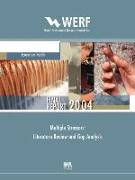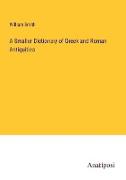Multiple Stressors: Literature Review and Gap Analysis
BücherAngebote / Angebote:
There is a pressing need for developing and testing a general set of theories in order to provide a confident basis for prediction of multiple stressor effects. Confident prediction is central to confident decision making in water pollution control. Consequently, WERF commissioned this study, which has as its goal to provide a study design based on good science that helps establish a general, conceptual approach to multiple stressors. The objectives addressed in this report are: (1) review and critique the existing body of knowledge for multiple stressors, (2) develop a searchable, annotated bibliography of multiple stressor research, and, (3) identify gaps in the body of knowledge. A rigorous, theoretical basis for the prediction of multiple stressor effects could not be developed from the literature on experimental studies of multiple stressor effects in aquatic ecosystems. Despite the wealth of observational data, the existence of several useful tools for interpretation of cause/effect relationships (including formal Stressor Identification methods), and the studies reviewed in this report, there are no tools that allow a confident, a priori, prediction of ecosystem response to multiple stressors. The current literature provides, at best, a series of site-specific glimpses of the response of ecological communities and ecosystems to multiple stressors. There is seldom, if ever, any reference to a more generalized model of multiple stressor effects apart from the discussion of the expectations regarding additivity versus synergism. Many articles that purport to be multiple stressor studies do not go beyond an inventory of the various stresses and upsets affecting the ecosystem, without attempting to assess the interactions among them. Some papers define the multiple stressor problems in terms of building a weight-of-evidence case for cause/effect relationships among stressors and receptors, or refer to a suggested general response pattern to stressors based upon effects-based monitoring. However, even these papers seldom place the definition of the problem in a wider framework provided by a general model. One notable exception presents three testable hypotheses concerning general responses of ecosystems to stress. They are: (1) a given biotic compartment in an incrementally stressed ecosystem will show suppression of biodiversity first and suppression of biomass subsequently (similar to the idea expressed by Schindler, (2) suppression of ecosystem function is primarily caused by reduced biomass, rather than loss of diversity itself, and (3) suppression of biomass differs among biotic compartments according to a predictable series of thresholds (i.e., multicellular organisms are more sensitive than unicellular autotrophic algae which are more sensitive than microbial decomposers).
Folgt in ca. 15 Arbeitstagen




